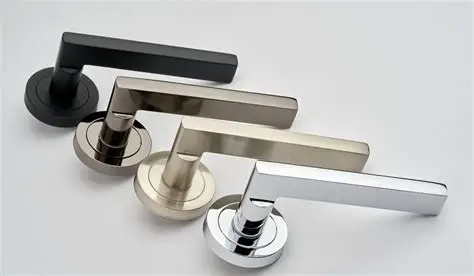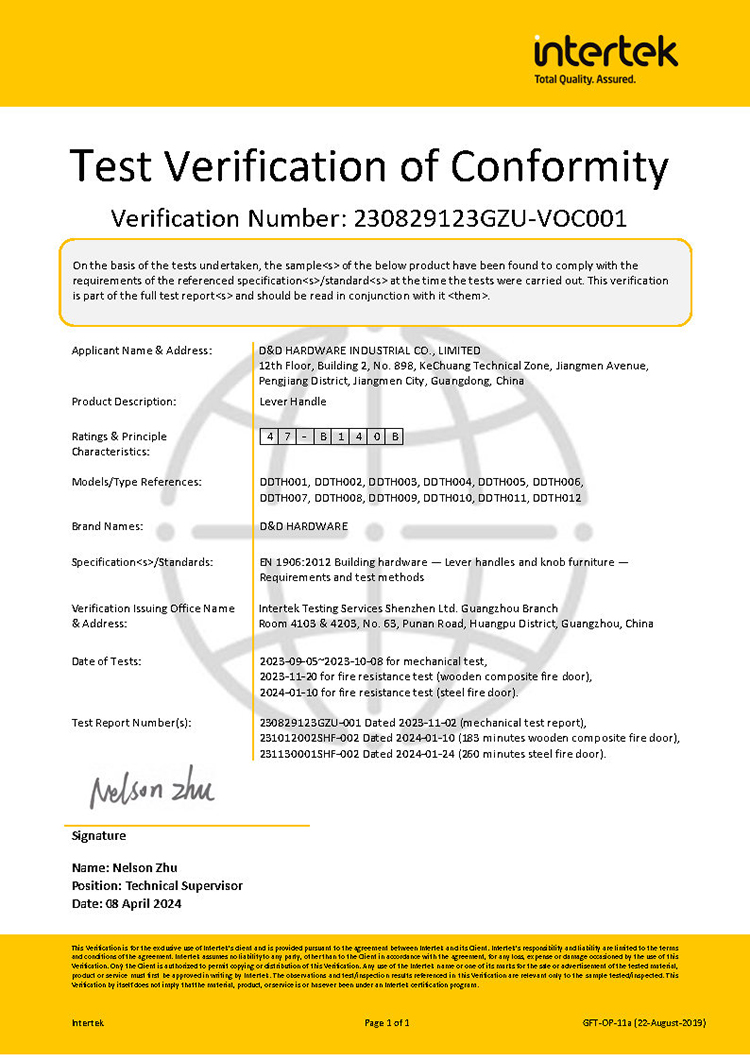Get Famous Branded Quality at Factory Cost
Pls inquire to sales@danddhardware.com
\\: +86 139 2903 7292
Author: Site Editor Publish Time: 2025-08-19 Origin: Site







Walk through any building and you'll encounter dozens of doors, each equipped with either a knob or handle. While most people don't give much thought to these essential hardware pieces, the choice between door knobs and door handles reveals fascinating insights about design trends, functionality, and regional preferences.
The debate over door knobs versus door handles has gained momentum in recent years, driven by accessibility requirements, aesthetic preferences, and practical considerations. Understanding which option dominates the market can help homeowners, architects, and designers make informed decisions for their projects.
This comprehensive guide explores the popularity of door knobs versus door handles, examining the factors that influence consumer choices and regional variations in preferences.
Door handles have been steadily gaining ground over traditional door knobs in recent decades. This shift reflects changing priorities in home design and building codes that emphasize accessibility and universal design principles.
Several factors contribute to the growing preference for door handles. The Americans with Disabilities Act (ADA) requirements have significantly influenced commercial building standards, mandating lever-style door handles in many public spaces. This regulatory push has created a ripple effect in residential design, where homeowners increasingly choose door handles for consistency and future-proofing their properties.
Modern architectural trends also favor the sleek, contemporary appearance of door handles over the traditional round door knob. Interior designers frequently recommend door handles for their ability to complement minimalist and modern design aesthetics that dominate current home renovation projects.

Geographic location plays a surprising role in door hardware preferences. North American markets show a strong preference for door handles, particularly in new construction and renovation projects. European countries have traditionally favored door handles, with many regions considering door knobs somewhat outdated.
In contrast, certain areas of the United States, particularly in the South and Midwest, maintain stronger preferences for door knobs in residential applications. These regional differences often stem from cultural traditions and local building practices passed down through generations of contractors and homebuilders.
International markets display even more variation. Asian markets often prefer door handles for their perceived modernity and ease of use, while some traditional architectural styles in various countries still favor ornate door knobs as decorative elements.
The practical advantages of door handles contribute significantly to their growing popularity. Door handles require less grip strength and wrist rotation than door knobs, making them accessible to people with arthritis, mobility issues, or those carrying items in their hands.
Emergency situations also favor door handles. Fire safety experts note that door handles can be operated with an elbow or forearm when hands are injured or occupied, potentially saving precious seconds during evacuations.
Door knobs, however, offer their own functional benefits. They typically require less maintenance than door handles, as their simpler mechanism experiences less stress from daily use. Door knobs also tend to catch on clothing and bags less frequently than protruding door handles.
Hardware retailers report that door handles outsell door knobs by approximately 60-40 in residential markets, with an even wider gap in commercial applications. This trend has accelerated over the past decade as accessibility awareness increases and modern design preferences evolve.
Price considerations also influence popularity. While basic door knobs and door handles fall within similar price ranges, premium door handles often command higher prices due to their perceived sophistication and design flexibility. Consumers frequently view door handles as an upgrade option during renovation projects.
The replacement market shows different patterns than new construction. Homeowners replacing existing door knobs often choose to maintain consistency throughout their homes, while those undertaking comprehensive renovations more frequently switch to door handles.
D&D BS EN Door Handle: BS EN1906 300,000 cycles test, EN1634 Fire Rated 183/260mins, EN1670 Corrosion Resistance 240 hours.

Door handles offer superior design flexibility compared to door knobs. Available in numerous styles, finishes, and configurations, door handles can complement virtually any architectural style or interior design scheme. From ultra-modern rectangular handles to ornate traditional lever designs, the variety appeals to diverse aesthetic preferences.
Door knobs provide their own design advantages, particularly in traditional and vintage-inspired interiors. Crystal door knobs, brass fixtures, and period-appropriate designs create authentic historical aesthetics that door handles cannot replicate.
The visual impact of door hardware extends beyond individual rooms to overall home cohesion. Design professionals increasingly recommend door handles for their ability to create clean sight lines and complement contemporary furniture and fixtures.
Installation requirements differ between door knobs and door handles, influencing popularity among DIY enthusiasts and professional contractors. Door knobs generally require simpler installation processes and fewer tools, making them attractive for homeowners tackling their own projects.
Door handles may require additional considerations during installation, particularly regarding clearance from adjacent walls and furniture. However, modern installation kits have simplified the process, reducing the complexity gap between the two options.
Maintenance requirements also affect long-term satisfaction. Door handles with their lever mechanisms may require periodic adjustment, while door knobs typically maintain their functionality longer with minimal intervention.
Industry experts predict that door handles will continue gaining popularity as universal design principles become standard practice. Smart home technology integration also favors door handles, as electronic locks and access control systems more easily accommodate lever-style mechanisms.
Environmental considerations may influence future preferences as well. Door handles constructed from recycled materials and sustainable manufacturing processes align with growing environmental consciousness among consumers.
The aging population in many developed countries will likely accelerate the adoption of door handles as accessibility becomes an increasingly important factor in housing design and renovation decisions.
The popularity contest between door knobs and door handles ultimately depends on specific needs, preferences, and circumstances. Door handles currently lead in overall popularity due to their accessibility, modern appeal, and functional advantages.
However, door knobs remain the preferred choice for certain applications, particularly in traditional homes, historic renovations, and situations where durability and simplicity take precedence over accessibility concerns.
Consider your specific requirements, local building codes, and long-term plans when choosing between door knobs and door handles. The most popular choice isn't always the best choice for every situation, but understanding current trends and preferences provides valuable guidance for your decision-making process.
Click here for additional details on door handles.
Now contact us.
Contact information for David Jian
Contact number: 0086-139 2903 7292
Email address: sales@danddhardware.com